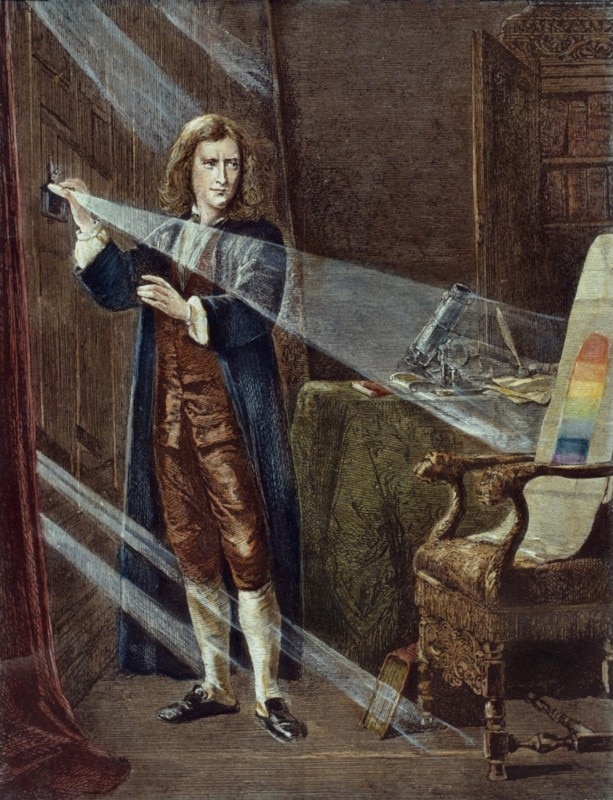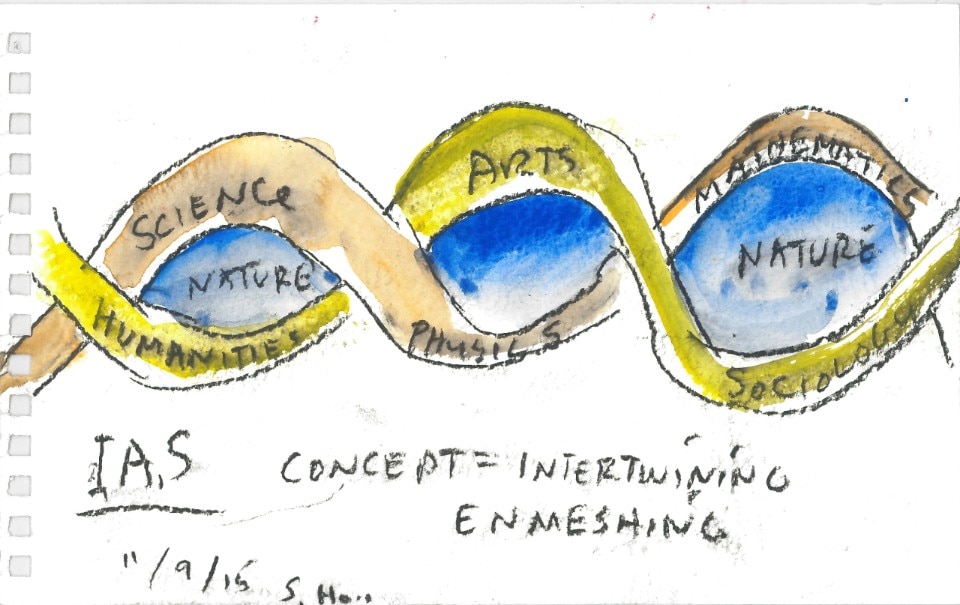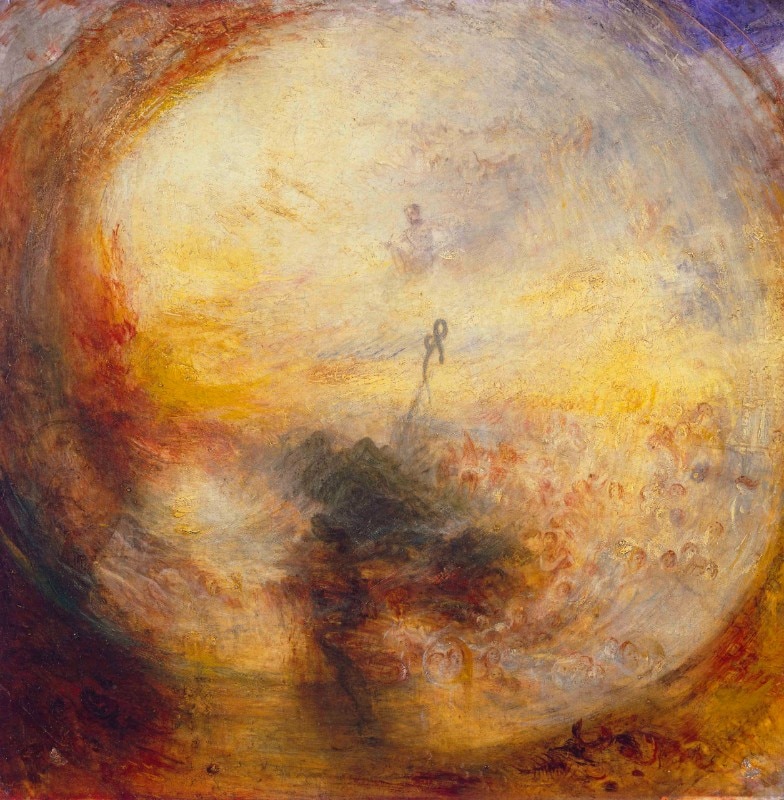The first light in the universe came 380,000 years after the Big Bang (13.78 billion years ago) when protons and electrons first met to form hydrogen and release light. This was before the planets and stars were born. Light is ancient, mythical and scientific, yet we are surrounded by it every day, everywhere. It is available and accessible to everyone; it is a quotidian element that governs the rhythm of our daily lives and connects us with a common shared experience. All light is electromagnetic radiation, but the human eye can only detect a narrow spectrum of these wavelengths. This is the range called visible light. This visible spectrum is how we perceive the world, and it is different in its strength, quality and capacity to refract the atmosphere at different locations.
Light is also heat; it is the radiation and energy that warms our planet. These effects of light are experiential, but its manifestations are also scientific. Scientists continue to question light and redefine our understanding of it. Isaac Newton proposed that light is made from particles or “photons”, and Christiaan Huygens countered with the assertion that light follows wave patterns. Later, Albert Einstein combined these two by proving that light acts with both particle and wave characteristics, launching the field of quantum mechanics. The quest continues: light from deep in space holds the key to the origin of the universe and life itself.
Like air, light is democratically accessible to all; it is one of a few elements that escape territorial boundaries and private possession.
Physics has always fascinated me because light and gravity are the two elements that architecture must always contend with. The cover photograph of the Bibliothèque nationale de France by Henri Labrouste presents an example where both principles were calibrated to enlighten us with the weightless perception of structure using cast iron and the transcendental quality of space using shadowless light. In the cover story of this issue, an erudite essay by Barry Bergdoll examines the story of the Bibliothèque in more detail. For architecture, art and design, light is the essential medium that helps to realise spaces, gives colour and renders form. It enables our emotional and visceral experience of the world around us.
As in Le Corbusier’s famous quote: “The history of architecture is the history of the struggle for light.” The study of light has also led to the philosophy of colour theory. As conceived by Aristotle: “Light is a ‘nature’ inhering in the Translucent when the latter is without determinate boundary. But it is manifest that, when the Translucent is in determinate bodies, its bounding extreme must be something real; and that colour is just this ‘something’ we are plainly taught by facts…”¹ Aristotle’s theory of colour’s determinate boundaries was scientifically explored by Newton, who invented a colour wheel of seven visible colours that make up white light, based on a mathematical model. Modern colour theory was further developed by Goethe, centred on the perception and inclusion of darkness: “Light and darkness, brightness and obscurity, or if a more general expression is preferred, light and its absence, are necessary to the production of colour.”² This new theory would help to bring about rationality in art and break away from religious dogma. British landscape painter J.M.W. Turner studied Goethe’s theory for his 1843 painting Light and Colour (Goethe’s Theory) – The Morning after the Deluge – Moses Writing the Book of Genesis. The painting depicts a confrontation of the biblical origins of light with the modern theorisation of colour.

Turner would later radically choose to depict landscape scenery without religious or figurative connotations. Coincidentally, the Hudson River School of painters in the United States would also choose to render daylight in the natural landscape rather than allegorical narratives of mythical or religious scenes. Around the same time, the impressionists in France had departed from the classical tradition of figurative depiction to make the protagonist of their paintings light itself. The history of our human understanding of light through art and architecture is a continuous search for the redefinition of ourselves and the world that surrounds us. Along these same lines, this issue of Domus presents the work of some of the most compelling explorers of the realm of light. I am delighted to include a conversation with Steven Holl, the other co-editor of Domus for 2023. Steven is one of the foremost architects of our time to effectively engage with light in architecture. Our common interest in science, phenomenology and the role of humanity resonates throughout our conversation.
Mark Wigley and Beatriz Colomina’s contribution on the work of Lina Bo Bardi is itself enlightening. Focused on an Italian architect who worked for Gio Ponti, the founder of Domus magazine, the essay has a special place in this issue as it reflects on the influence of Bo Bardi and the history of this publication. Light is incorporated in the designs of Lina Ghotmeh, Karamuk Kuo and Neri&Hu as a material that emphasises the mutable presence of spaces, depending on the time of day. These projects use light to connect to the world outside but also dematerialise the otherwise static nature of buildings. Light is an element of architecture that relates the diverse scales of our universe, from photons to the distance of stars. Information about the age and size of the universe is transmitted through the light of suns from billions of years ago.

We do not therefore yet know the size of the universe or if it stretches infinitely. The vastness of the universe also exposes the vastness of our ignorance of life here on Earth. To be flexible to changes in the stereotypical configurations of domestic occupation, SelgasCano, Michelle Chang and Sean Canty are redefining house paradigms and revamping known typologies using light. In this issue, they each arrive at new configurations for houses that absorb changing lifestyles and family formations in contemporary society.
My preoccupation with light is both personal and familial. James Carpenter, whose work is also featured here, is my husband of over four decades, and although his studio is independent of mine, I have been exposed to his continuous research into the scientific properties of light and quest for its potential. Like air, light is democratically accessible to all; it is one of a few elements that escape territorial boundaries and private possession. Light contains and transmits information. Goethe’s investigations of the natural world, the astronomy of Copernicus and Galileo, the philosophy of Descartes, and the physics and cosmology of Newton all contributed to the Enlightenment movement to rationalise the world around us. To be “enlightened” is to absorb new information about the world outside of our limited knowledge. In this issue of Domus, each contributor enlightens, opening up new pathways for thinking about light in design, art and architecture, and illuminates thoughts about our place in the universe.
1. Aristotle, De Sensu et Sensibili, Ch. 3, in The Parva Naturalia, trans. J. I. Beare, M.A., Oxford at the Clarendon Press, London 1908.
2. Johann Wolfgang von Goethe. Theory of Colours, The MIT Press, Cambridge, MA, 1970.
Opening image: William Turner, Light and Colour (Goethe’s Theory) – the Morning after the Deluge – Moses Writing the Book of Genesis, 1843. Oil paint on canvas. 78.7 x 78.7 cm. Tate Gallery, London © Tate, London. Photo Scala, Firenze


